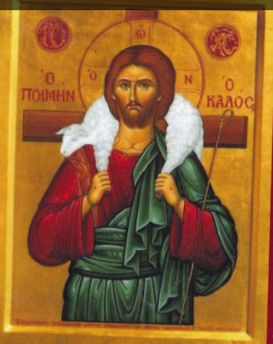
Four dozen cookies in all
After my last post about not being so busy as to lose the spirit of prayer and devotion, I mentally chided myself about what I was getting myself into yesterday morning.
Last fall, we froze a bunch of pumpkin that we had received, cleaned, baked, peeled, mashed and bagged. I’ve noticed that we are still amply supplied with frozen blocks of this mashed vegetable enclosed in plastic.
I also know that our residents really love the homemade goodies. Sr. Rebecca, our administrator, kind of encouraged the matter. So, Thursday evening, I had made my way to the freezer in our garage where much of my store of pumpkin from last fall still awaited use. I pulled out a sack of pumpkin to thaw.
The next morning, I got up extra early, and after time in chapel, praying and doing my sacristy duties, I set to work on the cookies.
The night before, I had also found that we had some chocolate in the cupboard that was ‘going no where.’ We also had a canister of cashews that were not getting eaten.
Furthermore, I had noticed another item when I was cleaning out the kitchen cupboard in the activity room earlier in the week: ice cream cones! They must have been purchased for a special occasion with quite a few left over. We really have no use for them at present and they “weren’t getting any younger.” Rather than toss them, or let them set around in the cupboard for weeks or months to come, I let the adventurous spirit get the better of me; I crushed the cones. (I didn’t have anymore oatmeal on hand, so crushed ice cream cones seemed a fine alternative.)
I also was going to try out some of the new spices I had received from my parents for my birthday, including allspice (which I am not accustomed to using.)
As if that weren’t enough of a complicated baking experience, I was also dealing with an oven problem. The top heating element in the oven I normally used seems to have gone out. Consequently (until we get it fixed) I’ve had to bring items to bake over to our convent kitchen. So when it was time to bake, back and forth, back and forth I went…
Early in the morning, I had microwaved the part of the pumpkin that had not thawed overnight. I strained and measured it – four cups. After choosing a recipe and deciding to double it, I figured I would use half of the pumpkin, that is, two cups.
Also having Mass and office duties, it was quite a bit to get all the baking done in between. And, I thought, I still have two more cups of thawed pumpkin to deal with. I was encouraged to just make up more cookies. Oh boy, I thought, I’ve got some more work to do! With the complication of hauling prepared cookie sheets over to the convent to bake, this day could be full. Residents and visitors would really like the cookies, though, so okay…
I went back into the activity room to put together a second double batch. By this time, I had procured a canister of oatmeal from our main kitchen, but I had used up all the chocolate. Maybe some raisins would be a good idea?
I went to the sink where I had strained out the pumpkin (I find this is important for making cookies), but there was no pumpkin. I scanned the kitchen area, but it was no where to be found!
The only conclusion I could reasonably make (No person in their right mind would steal pumpkin!) is that I must have unconsciously used ALL the pumpkin in my first double-batch of cookies. This would make sense, too, because the cookies had been a little difficult to bake, taking quite a long time to get thoroughly done; extra pumpkin could easy account for this.
What a relief – if all the thawed pumpkin was already used up, I didn’t need to do any more baking! I could clean up my dishes and get on with other matters in the afternoon! I considered my little mistake a blessing in disguise! I was grateful for the missing pumpkin!
Sr. Christina M. Neumann
 I recently came across a few questions someone was posing online for others to answer. I thought it might be good to try to respond to them here. (While I am not an expert, I would like to remind people that I would welcome the opportunity to try to answer any of your own questions about our life.)
I recently came across a few questions someone was posing online for others to answer. I thought it might be good to try to respond to them here. (While I am not an expert, I would like to remind people that I would welcome the opportunity to try to answer any of your own questions about our life.)
 The “Rule and Life of the Brothers and Sisters of the Third Order Regular of St. Francis,” which we promise to observe when professing our vows, has many statements that call us to follow Christ more closely.
The “Rule and Life of the Brothers and Sisters of the Third Order Regular of St. Francis,” which we promise to observe when professing our vows, has many statements that call us to follow Christ more closely. We just returned late last evening from our annual six-day retreat. It was a good experience, though by Day Six, as usual, I was getting a little antsy from all the silence and lack of regular work routine.
We just returned late last evening from our annual six-day retreat. It was a good experience, though by Day Six, as usual, I was getting a little antsy from all the silence and lack of regular work routine. his past Sunday’s gospel from Luke 7 (and similar accounts) has long been a special one for me, one which deeply resonates with me. It is the story of the sinful woman weeping, bathing Jesus’ feet with her tears and drying them with her hair, before she concludes by anointing them with costly perfume.
his past Sunday’s gospel from Luke 7 (and similar accounts) has long been a special one for me, one which deeply resonates with me. It is the story of the sinful woman weeping, bathing Jesus’ feet with her tears and drying them with her hair, before she concludes by anointing them with costly perfume. Note: As we approach the feast of a great Franciscan saint, Anthony of Padua, I asked my sister Angie if she could write a post since she has a special devotion to him. Below is her reflection
Note: As we approach the feast of a great Franciscan saint, Anthony of Padua, I asked my sister Angie if she could write a post since she has a special devotion to him. Below is her reflection Angela Neumann earned her bachelor of arts from the University of St. Thomas in St.Paul, MN in Philosophy and Catholic Studies. She holds a Masters of Theological Studies from the John Paul II Institute in Washington DC with a Specialization in Marriage and Family. She is currently work towards a degree in Marriage and Family Therapy. She has worked extensively for the Church in the Dioceses of St. Paul/Minneapolis, Washington, D.C., Bismarck and Fargo, ND, for the USCCB and in Rome. She is a retreat leader, speaker, youth minister, spiritual director and leader in women’s ministry. Angela enjoys the great outdoors, and coaching volleyball.
Angela Neumann earned her bachelor of arts from the University of St. Thomas in St.Paul, MN in Philosophy and Catholic Studies. She holds a Masters of Theological Studies from the John Paul II Institute in Washington DC with a Specialization in Marriage and Family. She is currently work towards a degree in Marriage and Family Therapy. She has worked extensively for the Church in the Dioceses of St. Paul/Minneapolis, Washington, D.C., Bismarck and Fargo, ND, for the USCCB and in Rome. She is a retreat leader, speaker, youth minister, spiritual director and leader in women’s ministry. Angela enjoys the great outdoors, and coaching volleyball.

 Looking ahead to the Summer? Think about Mother-Daughter Days at our Convent in Hankinson if you’re looking for some quality mother-daughter time.
Looking ahead to the Summer? Think about Mother-Daughter Days at our Convent in Hankinson if you’re looking for some quality mother-daughter time.